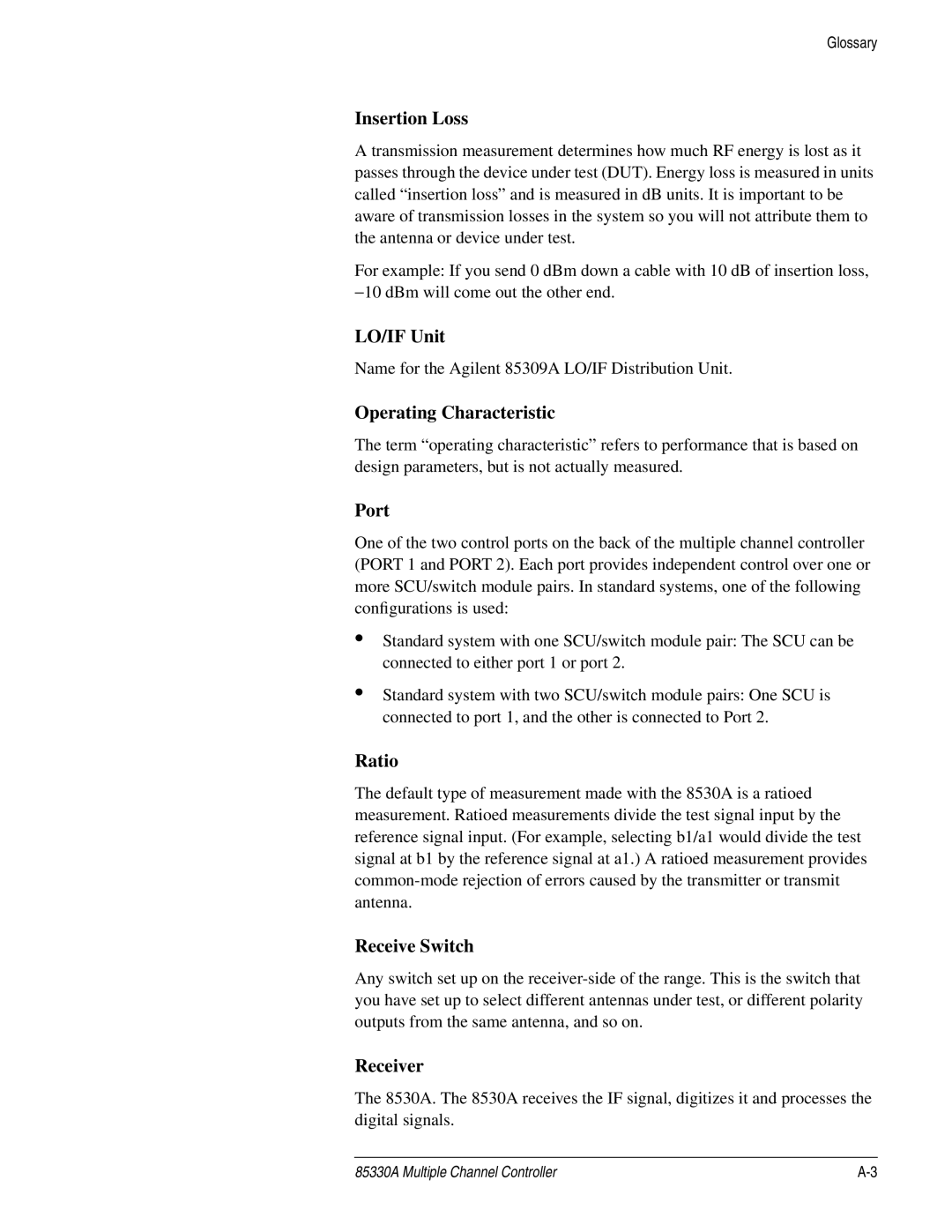Glossary
Insertion Loss
A transmission measurement determines how much RF energy is lost as it passes through the device under test (DUT). Energy loss is measured in units called “insertion loss” and is measured in dB units. It is important to be aware of transmission losses in the system so you will not attribute them to the antenna or device under test.
For example: If you send 0 dBm down a cable with 10 dB of insertion loss, −10 dBm will come out the other end.
LO/IF Unit
Name for the Agilent 85309A LO/IF Distribution Unit.
Operating Characteristic
The term “operating characteristic” refers to performance that is based on design parameters, but is not actually measured.
Port
One of the two control ports on the back of the multiple channel controller (PORT 1 and PORT 2). Each port provides independent control over one or more SCU/switch module pairs. In standard systems, one of the following configurations is used:
•Standard system with one SCU/switch module pair: The SCU can be connected to either port 1 or port 2.
•Standard system with two SCU/switch module pairs: One SCU is connected to port 1, and the other is connected to Port 2.
Ratio
The default type of measurement made with the 8530A is a ratioed measurement. Ratioed measurements divide the test signal input by the reference signal input. (For example, selecting b1/a1 would divide the test signal at b1 by the reference signal at a1.) A ratioed measurement provides
Receive Switch
Any switch set up on the
Receiver
The 8530A. The 8530A receives the IF signal, digitizes it and processes the digital signals.
85330A Multiple Channel Controller |
